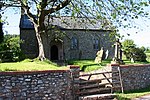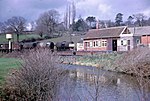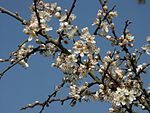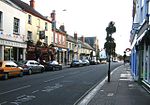Blackdown Hills

The Blackdown Hills are a range of hills along the Somerset-Devon border in south-western England, which were designated an Area of Outstanding Natural Beauty (AONB) in 1991. In November 2023, it has become 'Blackdown Hills National Landscape' The plateau is dominated by hard chert bands of Upper Greensand with some remnants of chalk, and is cut through by river valleys. The hills support an extensive range of wildlife leading to the designation of 16 Sites of Special Scientific Interest (SSSIs). There is evidence of human occupation since the Iron Age. Fortifications include the remains of ancient hill forts, Norman motte-and-bailey castles and Second World War airfields. There are also religious buildings such as Dunkeswell Abbey and village churches. The hills are crossed by a network of minor roads with major transport routes including the M5 motorway running around the periphery.
Excerpt from the Wikipedia article Blackdown Hills (License: CC BY-SA 3.0, Authors, Images).Blackdown Hills
Blackdown Hill Road,
Geographical coordinates (GPS) Address Nearby Places Show on map
Geographical coordinates (GPS)
| Latitude | Longitude |
|---|---|
| N 50.946944444444 ° | E -3.2297222222222 ° |
Address
Blackdown Hill Road
TA21 9PA , Wellington Without
England, United Kingdom
Open on Google Maps










